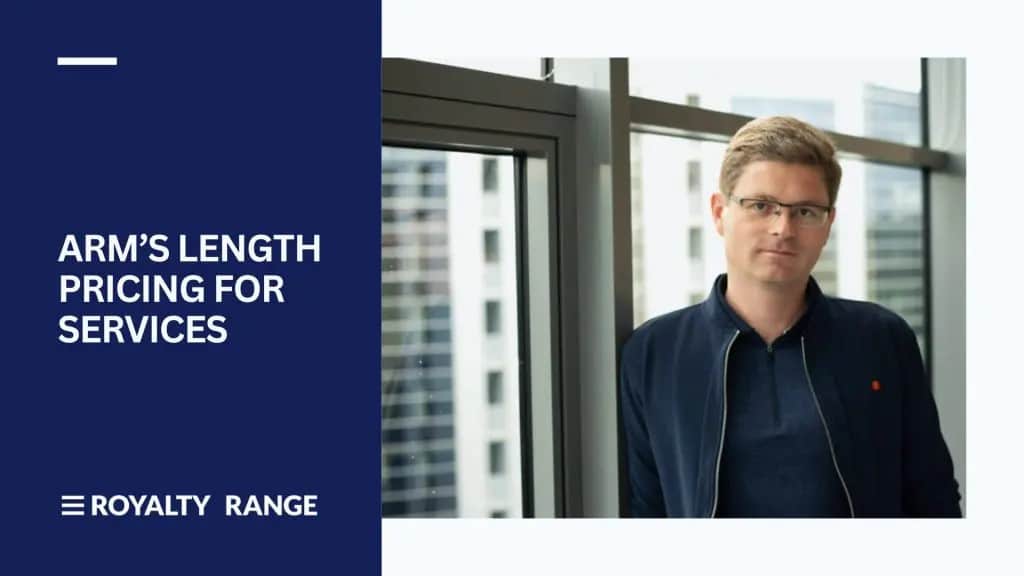Service fees: how to calculate arm’s length pricing

Kris (Kestutis) Rudzika |
October 15, 2023

Arm’s length pricing for services: an overview
For transfer pricing consultants, the ability to identify and apply the appropriate transfer pricing method is essential to ensure accurate and compliant results – and it’s no different when it comes to calculating arm’s length pricing for intra-group service fees. We’ve put together this brief overview to break down the different methods and the scenarios in which to use them.
Intra-group services: what are they?
Intra-group services are the various types of services that are provided within a single group of companies, often to support the operations and functions of the group as a whole.
They are typically provided by one subsidiary or entity within the group to another, and they can cover a wide range of activities. Intra-group services are generally used in multinational corporations to streamline operations, reduce costs, and improve efficiency.
These services can provide several benefits, including cost savings, better usage of resources, access to specialized expertise, and improved coordination among group entities.
Let’s take a closer look at the two common transfer pricing methods used to calculate arm’s length service fees: the Comparable Uncontrolled Price (CUP) method and the Cost-Plus method.
Comparable Uncontrolled Price (CUP) Method
The CUP method is a transfer pricing method that involves comparing the price or fee charged in a controlled transaction between related entities with the prices charged in comparable uncontrolled transactions between unrelated parties for similar services.
When to use it
The CUP method is preferred when there are reliable and comparable uncontrolled transactions available for reference. It is typically used for transactions involving tangible goods, intangible assets, or services.
Why use it
The CUP method is favored (the UK’s HMRC describes it as “the simplest and most accurate of the OECD methods”) because it directly compares the prices or fees in controlled and uncontrolled transactions. This method is considered the most direct and reliable way to determine arm’s length pricing if suitable comparable transactions exist.
By comparing the controlled transaction to unrelated party transactions with similar terms and conditions, it ensures fairness and compliance with the arm’s length principle. The CUP method is particularly valuable for services where comparable data is accessible, providing a solid foundation for transfer pricing documentation and demonstrating that related entities are pricing their services as if they were unrelated, in accordance with international tax standards.
Some common examples where the CUP method is applied for transfer pricing benchmarking analyses, involve services where a commission fee or hourly rate is applied, such as in:
- Distribution activities;
- Procurement services;
- Brokerage services;
- Asset management;
- Property management;
- IT/Software development services;
- Consulting services, etc.
Cost Plus Method
The Cost Plus method is a transfer pricing method where the service provider adds a markup or profit margin to its costs incurred in providing the services. The markup represents the profit that would be expected in an arm’s length transaction.
When to use it
The Cost Plus method is often used when there is limited availability of comparable uncontrolled transactions or when services involve unique or complex factors that make it challenging to find direct comparables.
Why use it
This method is straightforward and easy to apply when the service provider’s costs can be accurately determined. It ensures that the service provider earns a reasonable profit margin on top of its costs.
It’s important to note that the selection of the appropriate transfer pricing method should be based on the specific facts and circumstances of the controlled transaction, the availability of data, and compliance with relevant transfer pricing regulations. Additionally, transfer pricing documentation and compliance with local tax laws are critical to support the chosen method and pricing decisions.
FAQs
What are intra-group service fees in a business context?
Intra-group service fees are charges for services rendered between different entities within a corporate group, such as subsidiaries or affiliates.
Why is it important to calculate arm’s length service fees?
Calculating arm’s length service fees ensures that transactions between related entities are priced fairly, avoiding potential tax issues and regulatory scrutiny. It prevents tax issues, regulatory penalties, and disputes by pricing services as if they were provided by independent entities, maintaining financial integrity, and fostering trust with tax authorities and stakeholders.
What is the arm’s length principle?
The arm’s length principle requires related entities to price their transactions as if they were unrelated, ensuring fairness and compliance with tax regulations. The OECD defines it as follows in its transfer pricing guidelines:
“[Where] conditions are made or imposed between the two [associated] enterprises in their commercial or financial relations which differ from those which would be made between independent enterprises, then any profits which would, but for those conditions, have accrued to one of those enterprises, but, by reason of those conditions, have not so accrued, may be included in the profits of that enterprise and taxed accordingly.”
When should I use the CUP method?
Use the CUP method when there are reliable comparable uncontrolled transactions available for reference, especially for services with similar terms and conditions.
When should I use the Cost Plus method?
Use the Cost Plus method when it’s challenging to find comparable transactions or when services are unique, and the service provider’s costs can be accurately determined.
How do I implement the CUP method?
Identify comparable transactions, gather data, compare prices, adjust for differences, and determine the arm’s length price based on the comparison.
How do I implement the Cost Plus method?
Identify direct costs, determine an appropriate profit margin, calculate the arm’s length fee by adding the margin to costs, and document the analysis.
Misconceptions about arm’s length pricing
The same transfer pricing method works for all situations.
The choice of transfer pricing method should be based on the specific circumstances of the transaction and the availability of comparable data.
Adjusting for differences in the CUP method is unnecessary.
Material differences between controlled and uncontrolled transactions should be adjusted to ensure comparability.
The Cost Plus method guarantees an arm’s length price.
While the Cost Plus method is straightforward, it requires an appropriate profit margin and careful cost determination to ensure compliance.
Transfer pricing rules are the same worldwide.
Transfer pricing regulations vary by country, so it’s important to be aware of and comply with the rules in each jurisdiction where your business operates.
Premium-quality data for calculating intra-group service fees
Trusted by multinational enterprises, global consulting companies, international law firms and tax authorities in more than 70 countries, RoyaltyRange’s range of tools and databases cover private company financials and ownership information, royalty rates, loan interest rates and service fees – everything you need for transfer pricing, financial transaction benchmarking, royalty rates and service fees benchmarking, valuation of intangibles and purchase price allocations, sales and marketing lead generation and automation, procurement and client onboarding, and KYC/AML procedures.
Kris Rudzika, Managing Partner at RoyaltyRange, says:
“Our comprehensive database empowers our clients to make informed decisions and confidently navigate the complexities of transfer pricing and intellectual property valuation. We provide the data and expertise needed to ensure compliance, minimize risks, and optimize financial outcomes.”
You can find out more about our databases and tools here. Simply get in touch to request a live demo or trial access, or get started straight away by entering your search criteria in the One Search form.
The information provided below is for general informational purposes only and should not be construed as legal or tax advice. It is not a substitute for consulting with a qualified legal or tax professional.
Request One Search
We will perform the search and deliver the initial results within hours, at no cost.




